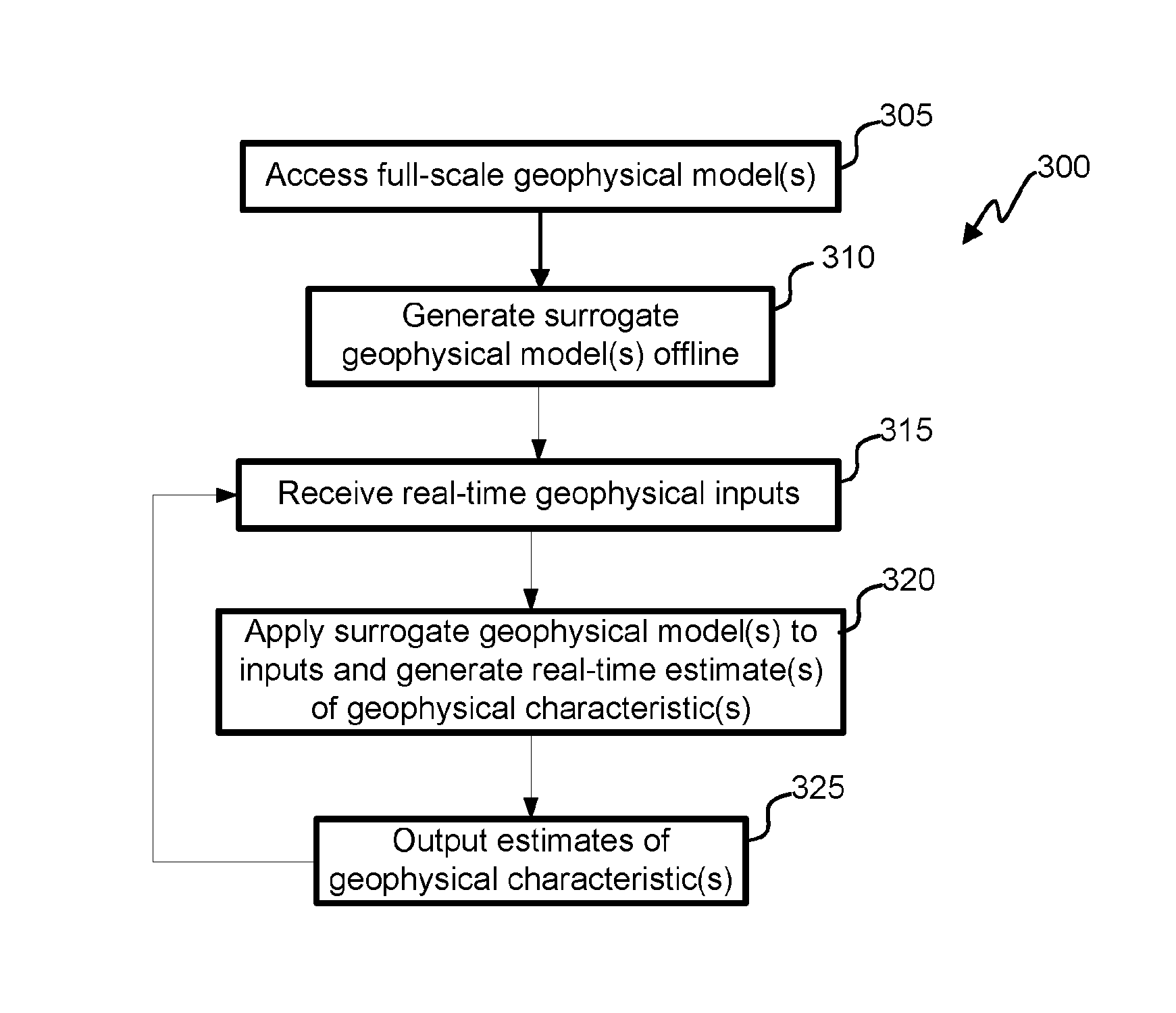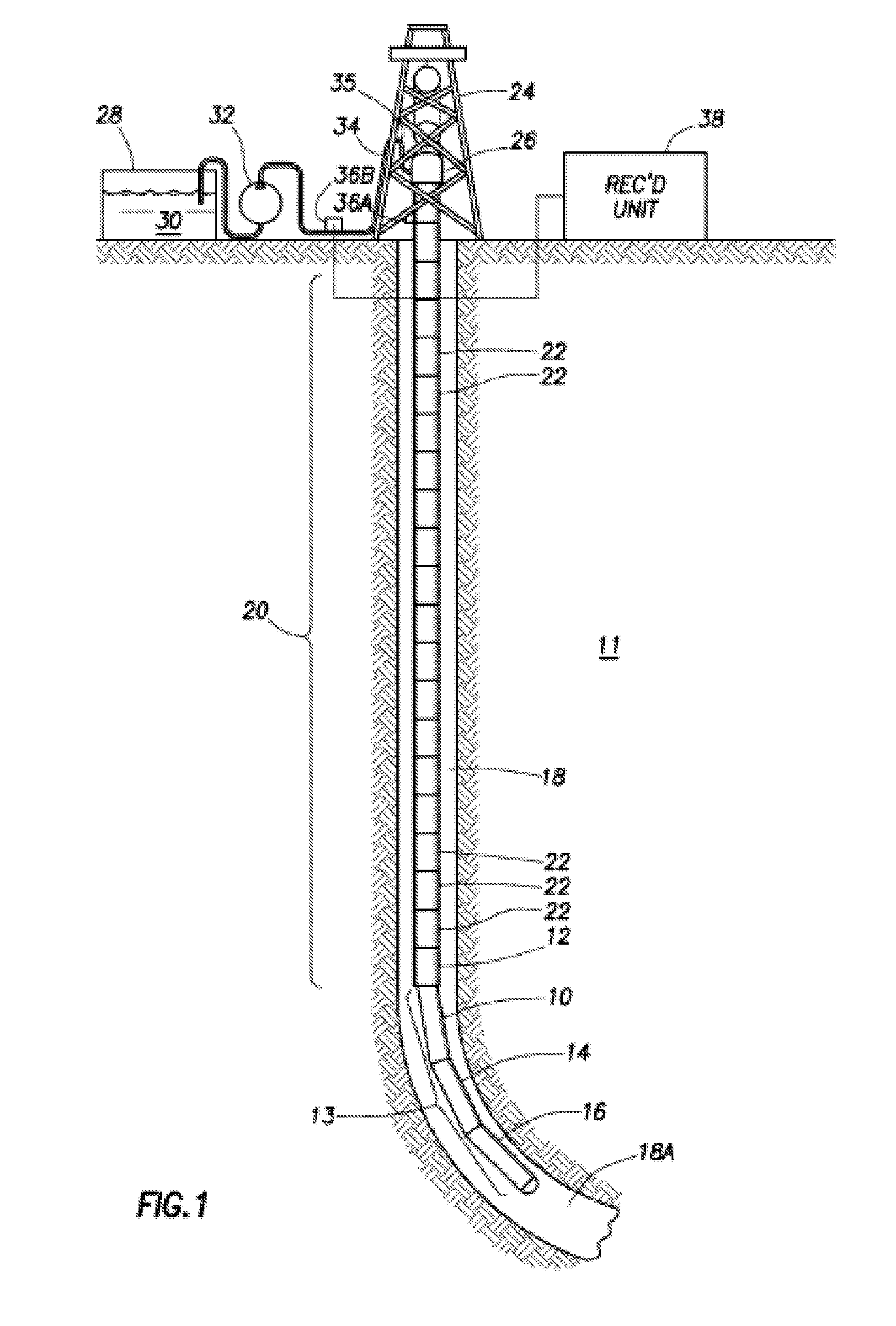Assessment, monitoring and control of drilling operations and/or geological-characteristic assessment
- Summary
- Abstract
- Description
- Claims
- Application Information
AI Technical Summary
Benefits of technology
Problems solved by technology
Method used
Image
Examples
example 1
[0135]In some embodiments, techniques, methods and systems described herein may be applied to estimate and / or predict properties related to cuttings transports. In one example, a model of a dynamic system describing cuttings transport includes the following relationship:
xk+1=ƒ(xk,zk,qk),yk=g(xk,zk,qk),zk+1=zk+noise, (1)
where xk is the state vector with nx entries as the average cuttings volume along the annulus, zk is the parameter vector with nz entries as the uncertain parameters (e.g., cuttings slip velocities along the annulus), qk is the input to the process (e.g., pump volumetric flow rate and rate of penetration of the bit), and yk is a vector containing pressure measurements at sparse locations along the annulus. Functions ƒ and g may be functions describing the cuttings transport process based on conservation of mass and momentum respectively or other drilling related models (e.g., torque drag model, temperature models, drillstring dynamics model, hydraulics model etc). Th...
example 2
[0139]Cuttings transport process in a vertical wellbore annulus in oilfield drilling are considered. Considering conservation of mass and a simplified version of linear momentum the process is described by a set of partial differential equations in one dimensional domain Ds≡as, {0≦L≦L} as,
∂(ρrxr)∂t+∂(ρrxrvr)∂s=ρrq,∂(p)∂s+ρg+fsh=0,(5)
where s is the distance along the annulus from the surface, xr(s, t) is the volumetric concentration of the cuttings, ρr(s), ρ(s) are the densities of the cuttings and the density of their mixture with mud, respectively. The variable, νr(s, t), is defined as the velocities of the cuttings, q(s, t) as the rate of cuttings volume production (a function of the rate of bit penetration and bit diameter), p(s, t) as the pressure along the annulus and ƒsh is a pressure loss term due to shear stress. Discretizing the domain Ds in n cells around n nodes at depths siεDs, for i=1, . . . n, and applying an upwind finite volume discretization method subject to bounda...
example 3
Particle Filtering with Switching Models
[0150]FIG. 16 illustrates an example of a particle-filtering framework with switching models. The outputs of M evolution models at time tk are denoted by {μk(i,n)}i=1Nn for n=1, . . . , M where M is the number of different models. The outputs of L observation models are denoted by {yk(i,n)}i=1Kn for n=1, . . . , L. At time tk, each model outputs N, particles denoted by {μk(i,n)}i=1Nn for n=1, . . . , M. Each of these models could describe different behaviors of the process (e.g., normal operation, kick event, etc.). The process outputs {yk(i,n)}i=1Kn for n=1, . . . , L can be obtained based on L different observation models, given the particles {μk(i,n)}i=11, . . . , {μk(i,n)}i=1M. These observation models could consider different states of sensors (e.g., working properly, complete failure, working with a bias error). At an instance in time, a number of particles will be generated based on the suitability of each model, which could allow monit...
PUM
 Login to View More
Login to View More Abstract
Description
Claims
Application Information
 Login to View More
Login to View More - R&D
- Intellectual Property
- Life Sciences
- Materials
- Tech Scout
- Unparalleled Data Quality
- Higher Quality Content
- 60% Fewer Hallucinations
Browse by: Latest US Patents, China's latest patents, Technical Efficacy Thesaurus, Application Domain, Technology Topic, Popular Technical Reports.
© 2025 PatSnap. All rights reserved.Legal|Privacy policy|Modern Slavery Act Transparency Statement|Sitemap|About US| Contact US: help@patsnap.com



